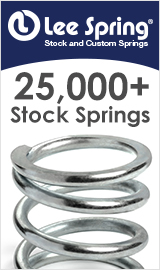Struggling with Parts? 3D Printing Can Make Your Company Whole Again
Companies face a lot of challenges in today’s topsy-turvy business climate. With historically high inflation, the ongoing war in Ukraine, and economic and political uncertainty worldwide, it’s a challenging era for everyone. To weather the storm, many organizations are hunkering down and being cautious, delaying capital expenditures and holding off on making significant investments.
This is understandable. But companies should keep in mind that some large investments make good sense when times are tough — solutions that improve resiliency and agility. Better still, there are small investments that achieve the same goal. One of these is on-demand 3D printing.
On-demand 3D printing makes sense for all manufacturers—even those with their own 3D printers in-house. Let’s say you have one 3D printing platform within your four walls. By going to a provider that offers on-demand 3D printing, you can tap into five, 10, or 20 more machines and increase your capacity exponentially. If you’re a manufacturer without on-site 3D printers, you can add 3D printing to your traditional manufacturing process without incurring any upfront hardware costs. You can also dip your toe in and take additive manufacturing for a test drive in ways you never could before.

On-demand 3D printing solves an array of challenges for companies facing uncertainty. It’s particularly effective for companies struggling to handle the process of manufacturing spare parts, of which there are now many. High storage and transportation costs, overproduction caused by minimum order quantities, and delays acquiring parts are common issues. Additionally, there are often occasions when suppliers no longer have the required spare parts when needed, such as when a vehicle fleet in operation for many years involves replacement parts that are no longer available.
Indeed, the problem of “obsolete” parts is now widespread. Many transportation companies like railways and bus lines still run equipment that’s 20 or 30 years old. And when they go to order a part for a long-serving vehicle, they find that it’s not made anymore. The original manufacturers are no longer in business. Worse, they may discover there are no designs to fall back on.
This is where 3D printing comes in. With on-demand 3D printing, it’s possible to quickly produce a needed part. It simply entails a 3D scan of the original part to replicate the design; then, a replacement can be printed overnight. Now, that transportation company can easily make the required repair and get its train, plane, or bus back in operation.

3D printing offers many benefits
On-demand 3D printing provides a faster, more efficient, and more cost-effective solution for spare parts management. It enables the on-demand production of metal or plastic parts without needing tooling. Better still, it can produce precisely the quantity required—there are no minimum orders. This is critical because the traditional process of manufacturing spare parts is often a rigid, wasteful, outdated process.
Indeed, typical injection-molding shops will turn away job requests for a few hundred parts or less because it’s not economically feasible for them to handle limited runs. The beauty of additive manufacturing is that the economics are so far ahead of what came before. Moreover, on-demand 3D printing now makes it possible for manufacturers to experiment with developing new parts and products in a way they could not before.
There are other benefits beyond creating high-value, low-volume replacement parts. Recent events have highlighted the vulnerability of supply chains to unforeseen events, whether it be the Covid-19 pandemic, the war in Ukraine, economic sanctions, a natural disaster, or political turmoil. With on-demand 3D printing, companies can make an end run around snags in their global supply chains. 3D printing can also help reduce sourcing costs because it enables companies to make parts close to home rather than in some far-flung location.
This is critical now, as recent events have shown how easily disruptions can occur in the supply chain. At any moment, it can become much more challenging to source key parts from countries like China, and this can have devasting knock-on effects for companies across the board. Suppose those companies can produce the parts they need locally and on-demand without relying on global suppliers. In that case, they’re in a stronger position to get their products to market and withstand any disruption.

3D printing powers agility and faster time to market
On-demand 3D printing offers a more efficient way of producing parts locally and enables faster time to market for almost any type of product.
The best 3D printing systems have an open architecture that is optimized for agility. This open architecture ensures that parts and products can easily be customized to suit the needs of various customers. It also allows for more flexibility in terms of the materials, technologies, and processes used. Additionally, an open architecture makes it simpler for different teams and organizations to collaborate, which enables faster development and innovation—at a lower overall cost.
When searching for an on-demand 3D printing solution provider, customers should also prioritize speed and materials expertise. A provider that can offer high-speed printing will be able to offer faster lead times and more affordable quotes than other service bureaus. Additionally, a “materials-first” provider that specializes in polymer-to-part production can provide customers with materials development and production that can create mechanical properties that don’t currently exist in a material. By working with a provider that offers these features, customers can receive high-quality 3D printed products that meet their unique specifications and requirements.
Creating short-run parts has always been a challenge for manufacturers. Now, with on-demand 3D printing, manufacturers and their customers can produce virtually any part they need at any scale they need-quickly, reliably, and repeatedly.



























































































































